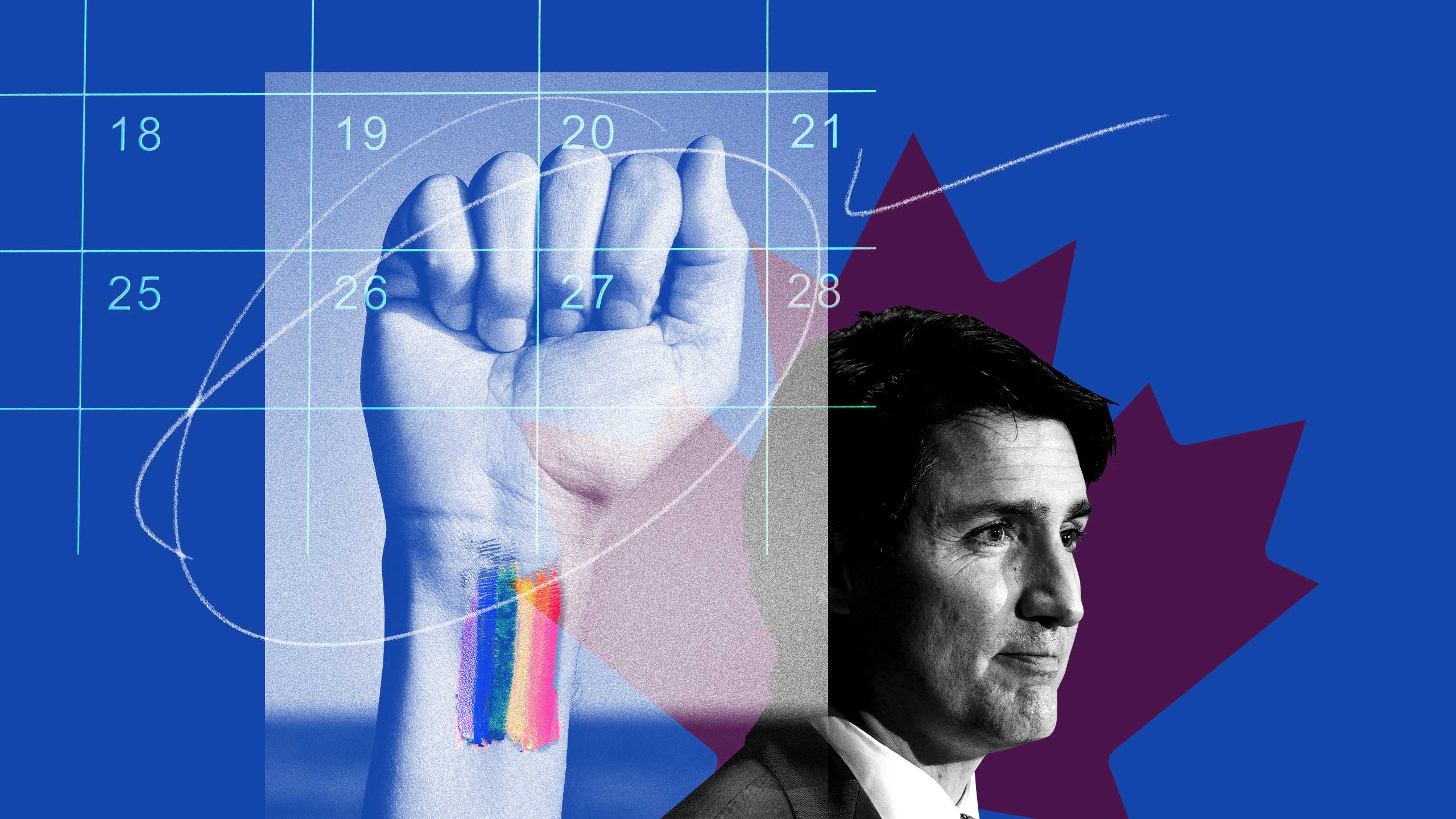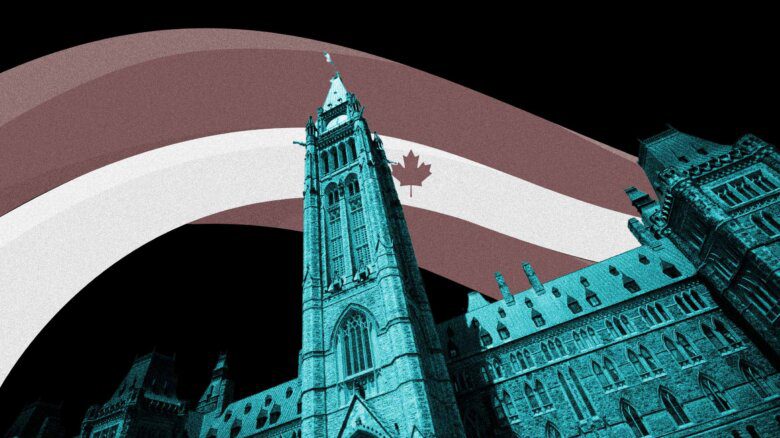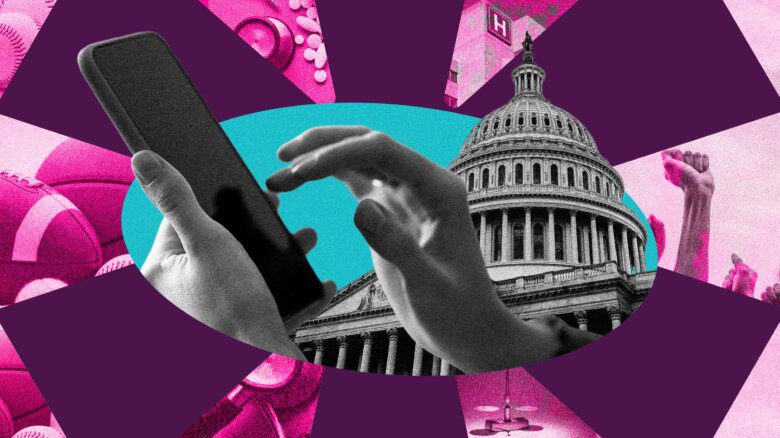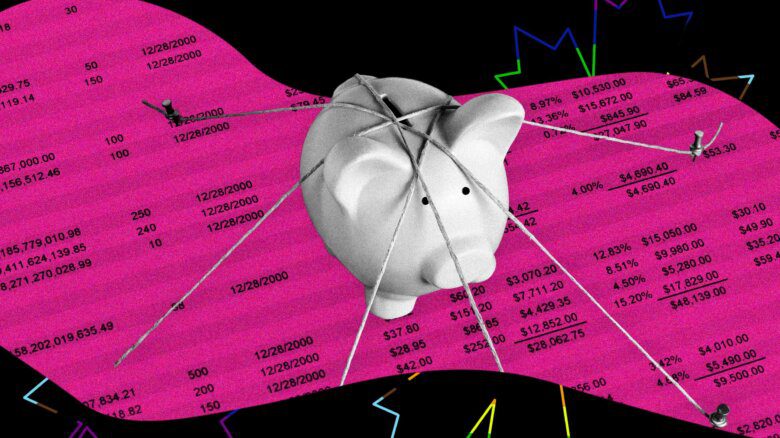In many respects, 2021 was a banner year for queer and trans Canadians. After great delay and an election, a tougher version of the bill banning conversion therapy passed both houses in very short order, with all parties signing on (despite some post-passage grumbling from certain Conservative MPs). The deferral period for blood donations for men who have sex with men and some trans folks is finally being overturned, as Canadian Blood Services (CBS) and Héma-Québec have made their applications to Health Canada’s regulatory arm to move to a behaviour-based screening model. There was queer representation, to some degree, in every party platform during the election (some much more than others). And the current Parliament has a record number of openly queer MPs and senators—including the first Two-Spirit MP—and a record four out Cabinet ministers, including the first openly lesbian minister in Canadian history.
It’s a lot. But it’s also not.
If anything, these were the easier boxes to tick on the agenda—stuff that has been in the works for years, and stuff that only required a grand gesture from the government or the parties. The conversion therapy ban, for instance, was actually relatively easy to deal with—it’s a singular piece of legislation that employs the Criminal Code, which is a fairly blunt instrument. Some of the more fine-tuned work to fully ban conversion therapy will need to be done at the provincial level and, so far, only a couple of provinces have done so. The blood donation screening model has been almost entirely out of the federal government’s hands (though they will take credit for funding the research that got CBS and Héma-Québec to this point), and it’s taken years of advocacy to get this far.
But with these big, flashy items crossed off the list, a lot of the really hard work is left to do, because the bigger issues deal with substantive equality now that formal equality has been achieved. It’s great to have our equality on the books, but it’s quite another thing to make sure that it happens on the ground in a meaningful way. It’s easy for governments and even members of the community to think that the job is done (particularly once marriage equality was enshrined in law), but there is a lot more to do.
Fortunately, the federal government does seem to be aware of this. Last week, mandate letters for cabinet ministers were released, and Minister for Women and Gender Equality and Youth Marci Ien, whose portfolio includes the LGBTQ2 Secretariat, had some specific instructions related to queer and trans communities. Those include:
• Continuing the work of the LGBTQ2 Secretariat in promoting LGBTQ2 equality at home and abroad, protecting LGBTQ2S+ rights and addressing discrimination against LGBTQ2S+ communities, building on the passage of Bill C-4, which criminalized conversion therapy;
• launching the Federal LGBTQ2 Action Plan and providing capacity funding to Canadian LGBTQ2S+ service organizations;
• supporting the minister of foreign affairs and the minister of international development in expanding Canada’s efforts to advance gender equality and LGBTQ2S+ rights abroad. This will include support for the work of global feminist initiatives, relevant international institutions and civil society partners, including the G7 Gender Equality Advisory Council;
• supporting the minister of labour in their work to accelerate the review of the Employment Equity Act and ensure timely implementation of improvements;
• supporting the minister of health in their work to ensure that all Canadians have access to the sexual and reproductive health services they need, no matter where they live, by reinforcing compliance under the Canada Health Act, developing a sexual and reproductive health rights information portal, supporting the establishment of mechanisms to help families cover the costs of in vitro fertilization and supporting youth-led grassroots organizations that respond to the unique sexual and reproductive health needs of young people;
• and supporting the implementation of the 2021 Missing and Murder Indigenous Women and Girls and 2SLGBTQQIA+ National Action Plan.
Within those are some key areas: the LGBTQ2 Action Plan should be ready to implement in early 2022, based on the government’s established timeline; the existing tranche of capacity funding is set to expire in March, so one can expect there to be more in the upcoming budget, along with the promised additional funds that were in the Liberals’ election platform. Modernizing the Employment Equity Act could be an opportune time to refine the language around gender identity and expression, as this was not updated when Bill C-16 passed in 2016, which included gender identity and expression in the Canadian Human Rights Act, or in the hate crimes provisions of the Criminal Code.
Not included in this list are any specific mentions of the LGBT Purge Fund’s report on the state of LGBTQ2S+ inclusion in the federal public service; that may be part of what’s in the Secretariat’s action plan, but we’ll have to wait and see when it gets released, and if it’s not included, demand to know why not.
Most of this work isn’t going to be sexy or earn the government the easy headlines that the swift passage of Bill C-4 did. The unsexy work of building toward inclusion and substantive equality is not easy to put into a press release or to explain in a 30-second talking point in Question Period. It’s also going to make accountability more difficult, because incremental progress is hard to measure. But we must watch to assure the government isn’t spewing empty platitudes and calling themselves supportive. Keeping sustained focus on some of those areas will be the real trick.
The first step for Justin Trudeau’s Liberals will be ensuring that the money they promised the community flows when they say it will, that they renew the expiring capacity-building funds, and come up with a list of deliverables for their LGBTQ2 Action Plan. Just because we’re getting into the weeds doesn’t mean we can take our eyes off the ball—and that’s going to be a key theme for 2022.


 Why you can trust Xtra
Why you can trust Xtra


